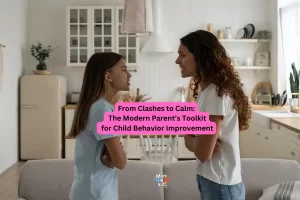As a parent, do you take for granted, like I did, that children will automatically listen to you? I learned some wonderful tips for coaching children to listen from a savvy veteran teacher who took me under her wing. When she showed me how to control a rowdy class of twenty-five first graders, I was determined to try the same techniques at home. Teaching children to listen actively involves all of their senses and engages their attention to their world.
1. Signs and visuals: For the visual learner, establish hand signals, a secret code between you and your child to use at home, in restaurants or in the grocery store. You can use traditional American Sign with your baby and toddler, or your own version of “quiet,” “listen,” “hear,” “shhhhh,” “see,” “look,” or “pay attention.” Making signs is a fun game, and can be used for managing behaviors like taking turns, sharing toys, hearing mom or dad, or an invitation to play cards or take a walk.
2. Whispering: Use whispering or speaking in lower voice tones to train all children in modulating their voice or stretching to hear you speak to them. For example, speaking in lower tones at a family dinner or holiday celebration teaches children respectful communication with others. They also learn that screaming is for outside and talking respectfully is for inside. Whispering is not for everyday use, but a strategy for choosing the type of conversation that is appropriate. Choose whispering when you most desire your child to listen.
3. Exploring Sound: In our bodies, sound corresponds with our central nervous system. A pleasant sound opens and expands us; it can energize or calm us. A shrieking sound will cause us to contract. Here are some ways to explore sound with our children.
o Have your children listen to the sounds around them. How many different sounds can they find in the kitchen or backyard?
o Encourage children to be creative making sounds. Have them use their voices or household objects to make sound. Allow them to make pretty, irritating, or silly sounds. They are all music if they reflect creative exploration or honest feelings.
The purpose for creating sound is to foster self-expression and open up our children’s ears to the world around them.
4. Listening to Their Bodies:
In our bodies, rhythm corresponds to our own internal body rhythm—our pulse and our breath. If the musical beat is quick and steady, our heartbeat and body movements will start to mirror it. If we are tired, listening to African drumming can kick our body back into gear. On the other hand, if a two-year-old is running around, slow rhythmic [tag-tec]music[/tag-tec] like Bach or [tag-ice]Vivaldi[/tag-ice] restores inner calm and slows most children down. Explore and add rhythm to the sounds that children make.
- Have your children play with different beats: fast, slow, steady, and erratic.
- Have them practice listening to the different rhythms around them, like the water dripping from the faucet or the ticking of a clock.
- Ask them if they can feel the vibration of a musical beat in their bodies, and if so, where? How do the different rhythms feel in their body? How do their feet want to move with the different beats?
- Try hand clapping to the rhythm of a poem and foot tapping to a favorite piece of music. These activities are every child’s favorite, free entertainment.
Listening to Others: Training children to listen can also involve cognitive development through the activities you both enjoy.
- For example, while reading a story, stop and ask children to retell their favorite section or discuss their favorite character.
- Invite older children to extend the story through their [tag-self]imagination[/tag-self] and playfulness.
- Ask children to repeat your instructions to insure their clarity.
- Present a problem and solution for discussion. What is the quickest way to clean the house, cook a meatloaf, make a salad, fold the laundry or rake the leaves in the back yard? Listening to all ideas and solutions is a respectful process, inviting further discussion or invitations to action.
I believe my greatest learning as a [tag-self]parent[/tag-self] was to assume nothing about a child, and start at the beginning: establishing eye contact, creating an empathic connection through voice or touch, and training my children in the skills I expect them to demonstrate.
Biography
Caron’s entrepreneurial fun takes place at the Academy for Coaching Parents International which provides training and certification for students to operate Parent Coaching businesses. As a mother and stepmother, Caron knows firsthand the importance of parenting skills and that nurturing children with joy, common sense, and connectedness enriches and benefits both parent and child. Her newest book is Help Kids Cope with Stress and Trauma. Her expertise has made her a frequent media expert and her work has appeared in Colorado Parent, Convergence, The Joyful Child, Energy, Black Family Digest, and Better Homes and Gardens. She and her husband Tom Goode, ND, live in Ft. Worth Texas.
EDUCATION
Post Doctoral Work: (1996-1998) Institute of Transpersonal Psychology; focus on Women’s Psychology and on Wellness
Doctorate of Education: (1979-1983) The George Washington University, My degree is in Counseling Psychology, with the major, Human Development and Leadership and a minor in Special Education.
Masters of Communication: (1972-73) Our Lady of the Lake University, San Antonio TX. Major was language and minor was learning disabilities.
Bachelor of Science: (1971) Oklahoma University of Liberal Arts, Major was Speech Therapy and Deaf Education.
No part of this article may be copied or reproduced in any form without the express permission of More4Kids Inc © 2006











1 Comment